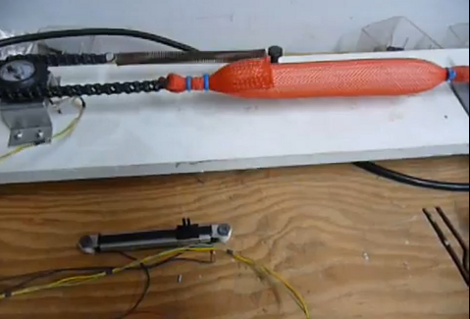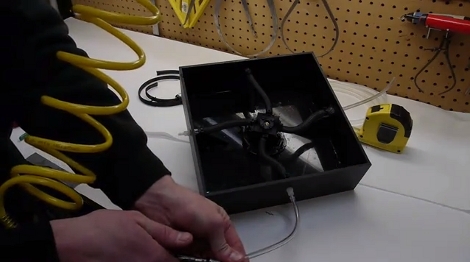
Check out this setup that [Ruenahcmohr] is using in his air muscle experiments. The orange mesh contains an air bladder that is connected to a hose on the right side. The bladder can be filled, or emptied with two solenoid valves not seen here (but you can get a good look in the video after the break). The muscle attached to chain on the other end and is kept under constant tension by a spring. The chain bends 180 degrees around a gear which is connected to a potentiometer. This gives feedback to the ATmega32 which controlling the whole thing. This way, the slider seen above can be used to control the apparatus.
We don’t know if [Ruenahcmohr] has a use in mind for this setup, but it certainly looks promising! We’ve seen these air muscles used for haptic feedback before, but right now we’re drawing a blank when it comes to ideas. What would you use it for?
Continue reading “Experimenting With An Air Muscle And Sensor Feedback”












